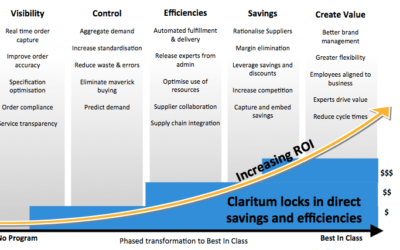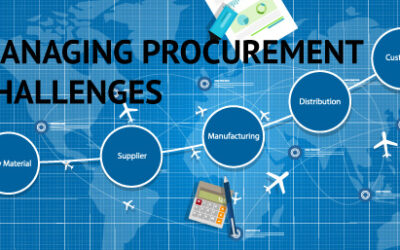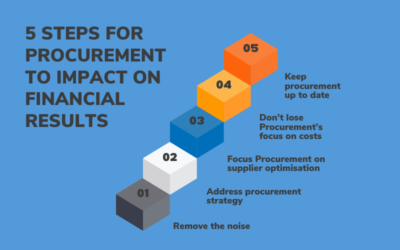
1: Introduction
Project-based procurement occurs when there is a specific project activity and goal. This may be a project that repeats at regular intervals or it may be a one-off project.
The project could include volume purchases, small purchase volumes, standard items, specification of unique one-off items and tailoring of items based on individual projects. All included within any one project activity.
The defining nature is that there is a duration of time over which the project procurement occurs and a need to capture the procurement activity in the context of this project. There are also time dependencies within a project procurement activity, where purchases need to occur in chronological order for the project to run smoothly.
2: Typical steps associated with a project purchasing process
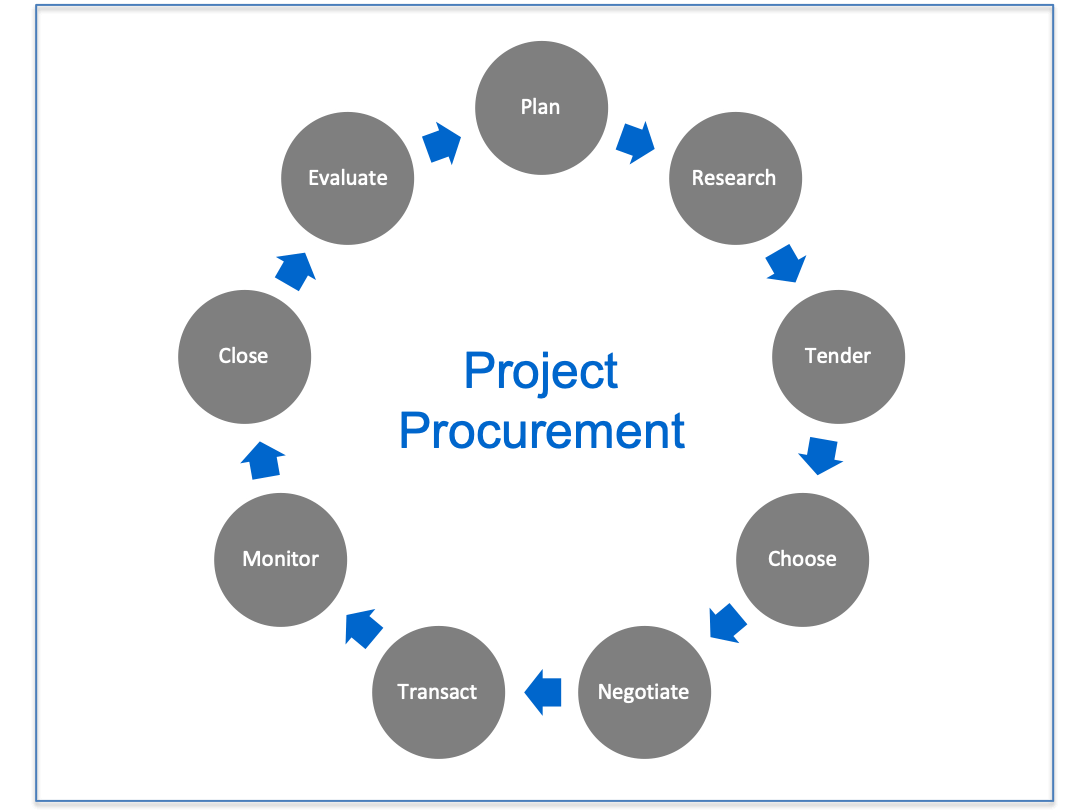
An image showing the steps in project based procurement
- Planning the procurement project, including project risk assessments and assessment of the relative importance of the project to the business
- Supplier and Market research. Including identifying potential suppliers and any areas to be focused on at the Category or a Strategic level within the business
- Start a tendering process: RFI, RFP, RFQ
- Short-listing of suppliers and assessment of the opportunities for cost reduction, quality improvement and revenue enhancement that exist
- Negotiation and awarding of contracts and supply agreements for any new suppliers: agreeing on the terms for supply, including the nature of the relationship and its subsequent management within the project framework
- Transactional procurement and expediting
- Monitoring the procurement activity within the project: ensuring obligations and any compliance aspects are met
- Closing the project and associated contracts and supply agreements
- Supplier evaluation and performance feedback
3: Project and Category Procurement Differences
Project based procurement groups all the purchasing activity within a project framework. The alternative approach would be Category based where items are bundled into categories based on their similarity and managed as a category.
A project procurement activity does allow Category specialists to be involved in the purchase of the items within the project. Allowing the category specialist to apply their knowledge and lever their supplier relationships. However, the purchases are not grouped into an overall category-based procurement. The project requirements and timelines are the driving force of the project-based procurement process, not the Category emphasis. The purchases made in association with the project.
Category or Project based procurement should be used as appropriate to the nature of the purchase. The use of one should not eliminate the use of the other. They serve different purposes and should be used within a procurement organization appropriately.
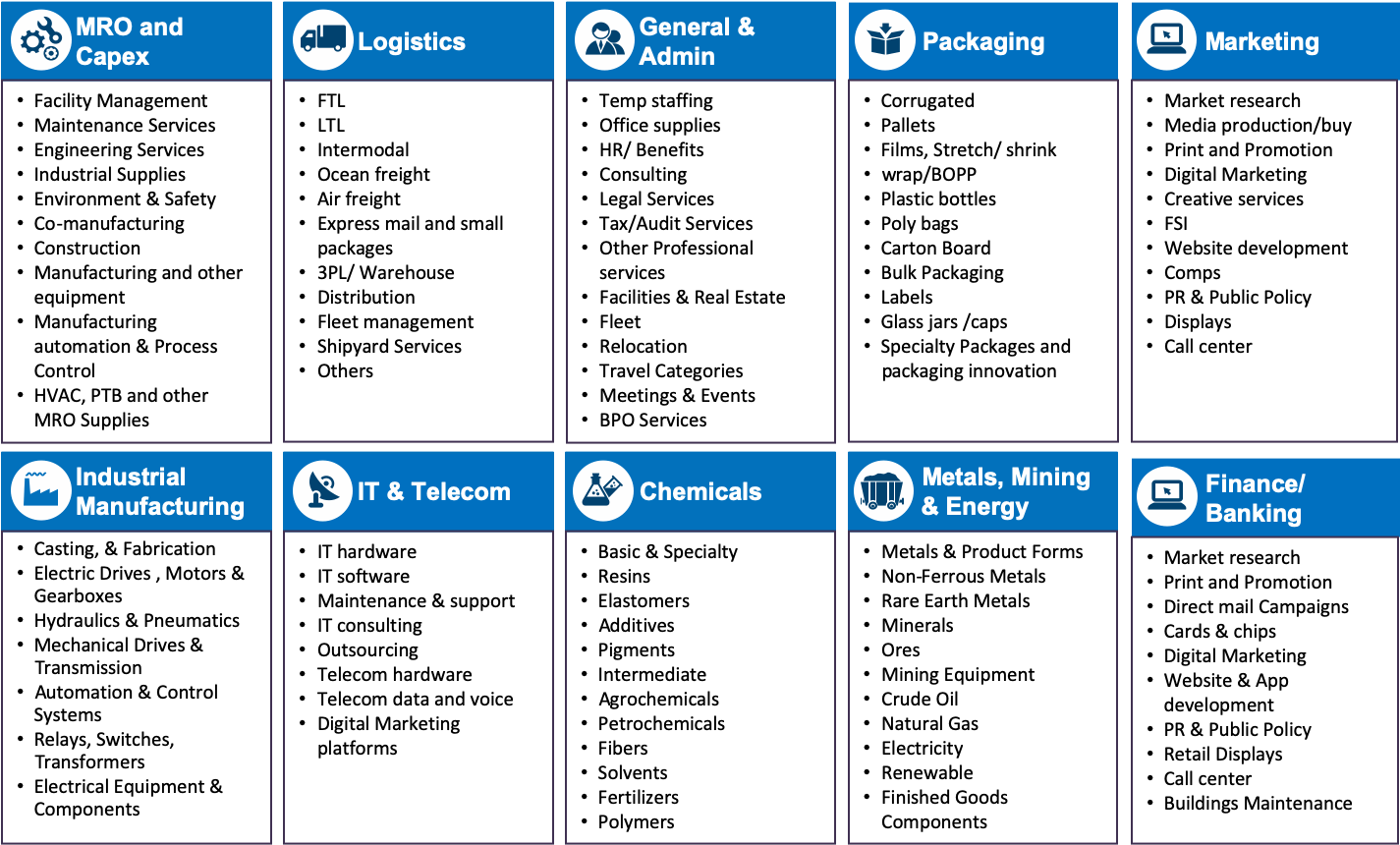
4: Table of the key differences between Project and Category based procurement
The following table outlines some of the key differences between Project and Category based procurement processes.Focus
Strategic or Tactical
Centralised or devolved
Compliance handling
Relationships
Timelines
Sustainability
Change Management
Price
Payment
Delivery
Competences
5: Types of activity suitable for Project based procurement
Projects can range from large projects, for example in manufacturing operations, to small projects such as exhibiting at a conference. Marketing campaigns are also project based activities. There is one common theme and that is that purchases are directly associated with a specific project or purpose. Making it more sensible to source within a project framework.
Examples could include:
- Setting up a new manufacturing location
- Exhibiting at a major trade fair
- Developing and testing a new product
- Launching a new product
- Fitting out an office
- Building a new station on the UK HS2 rail link
It should be noted that the common theme, of all of the above, would be that they have a very clear goal and a definite timeline/finish date.
6: The inherent challenges of project-based procurement
One of the biggest challenges facing Procurement overall is the fragmentation of the supply chain creating a very diverse supply market from which to source: there exists a large number of suppliers, now on a global basis, with which any firm may do business in the delivery of their requirements (from small specialist companies to large multifunctional firms delivering complete solutions). The challenge is to know who could offer an advantage in the supply of a specific requirement. This is a difficult enough challenge at the Category level. Taking this on a project by project basis increases the difficulty if the project is not to be repeated either in whole (with subtle differences) or in part: managing to identify and contract suppliers within the timelines of a specific project adds pressure to the sourcing process. Ensuring project purchasing is captured within an automation process helps. Since the suppliers for any project are captured and can be requested to bid against any new project requirement.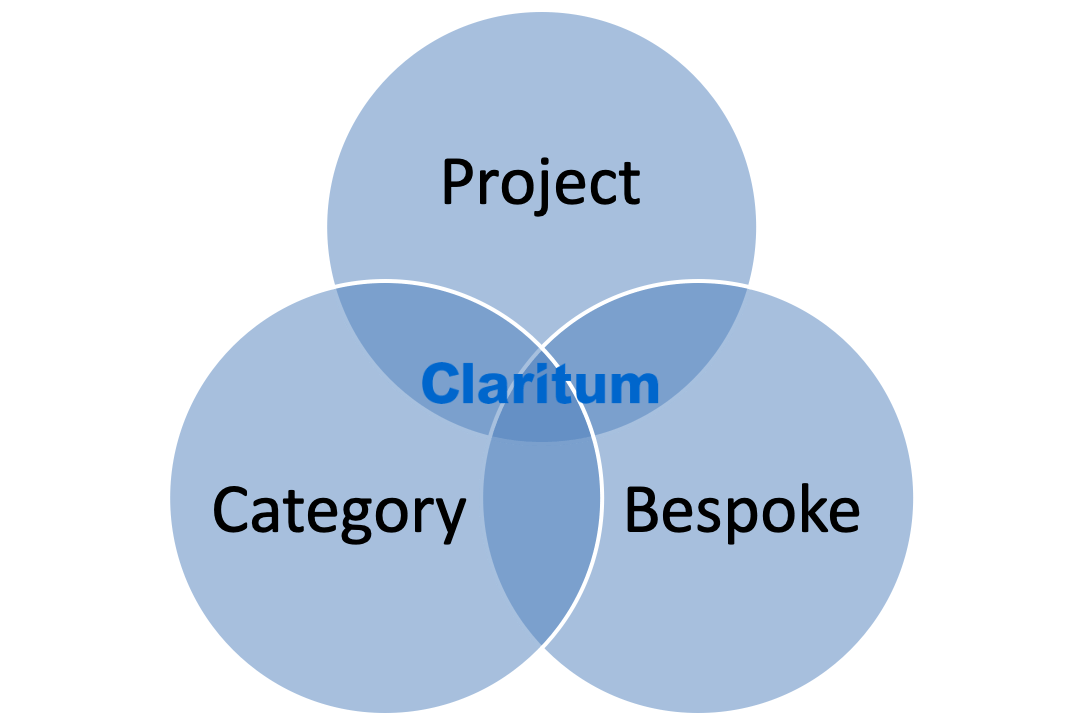
7: Characteristics of good Project Procurement activity
Companies that consistently capture the most value from project procurement typically have these critical procurement capabilities:
- Superior supply-market expertise for procurement of project-based goods and services
- Project based automation for Sourcing through to Payment
- Early assessment of project-related procurement risks
- A cross-project sourcing focus to gain from common project activity
- A focus on TCO associated with all purchases within the project and for the overall project
- Use of RFQs and Contractual terms that are designed to optimise supply performance against the project objectives

